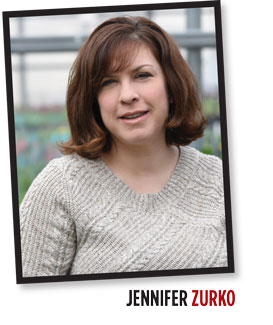1/1/2023
Redefining the New Normal
Jennifer Zurko

When the COVID pandemic came upon us in early 2020 with all its scary weirdness, all of us had to forcibly pivot and uproot our professional and personal lives. Words like “unprecedented” and “social distancing” have been permanently injected into our vocabulary. And Zoom, once an obscure platform to have virtual meetings, is now part of our day-to-day lingo as a verb that we do, kinda like when you have to Google something.
Another term that was popularized during the last couple of years is “the new normal.” Dictionary.com refers to the term as “an oxymoron typically used to indicate a life event that’s out of the ordinary and has a long-lasting or permanent impact on someone’s day-to-day routine. For instance, a couple who just had their first baby might tell friends and family they’re adjusting to their ‘new normal.’”
But the website points out that if you check Thesaurus.com for synonyms for “new” and “normal,” you get “strange routine,” “unusual standard” and “unfamiliar order.”
The folks at Dictionary.com wrote: “Those all seem to better capture the inherent strangeness of this time.”
No one can debate that it’s been weird. But maybe, instead of always looking at how our lives were upended for a period of time, we should look at the lessons we learned about ourselves and each other, the innovations that were developed to make our lives easier and new processes put in place that actually turned out to be better. Some of what started out as a “new normal” has become “business as usual.”
One of the “new normals” that I know some of you have been getting used to are shortages and delays on certain products, especially on inputs. It was worse this time last year, but we’re still experiencing some instability. Nothing illustrates that more than last year’s news that peat suppliers were limiting or completely ending the sale of raw peat, primarily because of bad weather preventing maximum peat harvests. This really had some growers scrambling, either to get their hands on as much raw peat as they could through favors and back-channels, or to find some sort of replacement in a hurry. (Trust me—I’ve heard the stories.)
But many growers have been able to navigate through the new normal of substrate supply shortages with some creative thinking and adoption of newer products. Dr. Brian Jackson, growing media researcher and expert, discusses some of the challenges growers continue to face with procuring substrates and how they’ve been able to come up with back-up plans.
During the height of the supply chain issues, growers were also having trouble getting their fertilizer sourced. Hopefully, you already have everything you need for this season, but if you’ve been thinking about switching it up to a custom-made blend from your supplier, see if a change would work for your operation.
Vapor Pressure Deficit (VPD) may not be a new thing, but understanding when and how to adjust it can seem like it is. Dr. Will Healy, legendary (and now retired) greenhouse tech expert, helps Bill Calkins break down how to best control your production environment using VPD.
We also have a brand-new column starting this month. Called “Field Notes,” consultant, writer and hort professional Lowell Halvorson will be taking a deep dive on a specific crop every month to give us an update on what’s currently going on with breeding and the marketplace.
And, lastly, we have our annual map and stops guide for the California Spring Trials. You know I’ll be there again this year. Like normal. GT